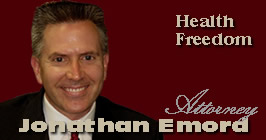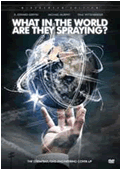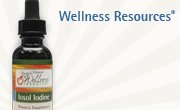FDA RAINS ON MOBILE MEDICAL APP PARADE
By
Attorney Jonathan Emord
Author of "The
Rise of Tyranny" and
"Global
Censorship of Health Information"
November 14, 2011
NewsWithViews.com
Mobile medical apps are prolific in the market. Created by physicians and scientists, most are used by physicians and hospitals to accelerate and reduce human error associated with computations needed for the use of various devices; to improve the quality of imaging used in diagnosis and treatment decisions; and to permit real time, remote monitoring of cardiopulmonary functions, blood sugar levels, brain wave patterns, and numerous other indicia of disease. These innovations are vastly extending the reach of physicians and are greatly improving the lives, longevity, and freedom of patients. They are inextricably linked to medical practice which is evolving from hospital and clinic bound service to remotely delivered service. Having eyed the mobile medical app market since the 1980’s, the FDA has now stepped forward to increase its regulatory presence--not through the legally required means of a rulemaking but through the autocratic alternative of an agency “guidance.” Although characterizing its move into medical app regulation as limited, FDA’s intervention threatens to politicize, retard, and disable a thriving and enormously beneficial marketplace.
As it has in every instance of market-wide regulation in the past, FDA now promises to regulate a huge part of the mobile medical app market and to determine within that market who may be a part of it and who may not, politically selecting winners and losers. Countless lives have been lost due to corruption, costly delays, and anticompetitive bias within the FDA’s Center for Devices and Radiological Health (CDRH) and it is that center which will be primarily responsible for regulating mobile medical apps. As FDA endeavors to bring more and more mobile apps under its purview, ever increasing numbers of lives will be lost. What the market giveth, the government taketh away; and what the Lord giveth in life, the government taketh away also.
On July 21, 2011, FDA published its mobile medical app “guidance.” While professing that it was engaged in a limited intervention into the market, the FDA in fact carved out an enormous universe to regulate: all mobile apps that function as accessories to existing medical devices; all mobile apps intended for use in the diagnosis of disease or other conditions or in the cure, mitigation, treatment, or prevention of disease; and all mobile apps intended to affect the structure or function of the body. It is scarcely possible to conceive of a medical app that would not be deemed a regulable device under FDA’s regulatory definition.
In its guidance, FDA explains that a party that markets a mobile app meeting its definition is required to seek FDA approval, either in the form of a 510(k) substantial equivalence application (in which the applicant claims, rather absurdly, that its innovative app is substantially equivalent to an existing, FDA approved medical device) or in the form of a premarket approval application, carrying with it a whopping FDA filing fee of over $220,000.
Aware that FDA can prosecute parties for selling mobile medical apps without FDA approval, many in the IT community who presently market such apps are contemplating getting out of the market and many who had planned to introduce new apps may avoid doing so. The effect will be to prevent the introduction of life saving and life enhancing technologies, destroy business and employment opportunities, and retard the development of a vibrant market in which physicians and hospitals serve as ensurers of patient safety, selecting only those apps that aid in the practice of medicine. Like all other FDA regulated markets, the mobile medical app market will become a dull market if the FDA succeeds in becoming the predominant player, the determining factor of market entry.
Without FDA regulation, physicians and hospitals do very well at protecting patient safety, albeit no system is perfect. Physicians are necessarily the primary determinants of the relative worth of a mobile medical app. That is as it should be because they are best situated to comprehend individual patient need and to appreciate the limitations of the technology. Substituting the FDA as an ultimate decision-maker invites political action to override sound medical judgment. FDA is in the business of catering to the needs of the largest medical device makers. For decades FDA’s operational purpose has been to view the large industry players as its clients and to do their bidding, even if that means reversing the recommendations of career FDA scientists or, as in the case of Vioxx, countenancing the deaths of tens of thousands of Americans by defending the continued marketing of a bad drug.
The FDA has a long and sordid history of medical device regulation. In a letter sent to the then Chairman of the House Energy and Commerce Committee dated October 14, 2008, echoed in letters later sent in April of 2009 to President Obama, nine top FDA scientists complained of “misconduct” by FDA political managers in CDRH. The letter explained that those acts of misconduct reached “the highest levels of CDRH, including the Center Director [then Daniel G. Schultz] and the Director of the Office of Device Evaluation [then Donna-Bea Tillman].” The nine agency scientists explained that they possessed documentary evidence that CDRH political managers “corrupted and interfered with the scientific review of medical devices.” In particular, they complained that CDRH political managers “ordered, intimidated and coerced FDA experts to modify their scientific reviews, conclusions and recommendations in violation of the law” and “ordered, intimidated and coerced FDA experts to make safety and effectiveness determinations that are not in accordance with scientific regulatory requirements, to use unsound evaluation methods, and [to] accept clinical and technical data that is not scientifically valid nor obtained in accordance with legal requirements, such as obtaining proper informed consent from human subjects.” The letters explain that these same agency political managers avoided recording their orders and “engaged in reprisals and ignored . . . critical concerns” creating “an unwarranted risk to public health and a silent danger that may only be recognized after many years.” Eerily, the letter confirms a horrible truth about the environment at FDA: “There is an atmosphere at FDA in which the honest employee fears the dishonest employee.” FDA culture is one of political blame, defamation, and retribution.
CDRH, like FDA in general, is ruled by political appointees. They are superior to every regulatory scientist at the agency. They make all final judgments issued by the agency, and they insinuate themselves into every aspect of scientific review. The personal financial and political interests of those appointees often conflict with outcomes dictated by sound scientific evaluations. For decades, medical reviewers in CDRH and the FDA Center for Drug Evaluation and Research (CDER) have often reached their wits end and have become whistleblowers, condemning the agency’s leadership for being captives of leading industry and for doing that industry’s bidding even at the expense of human life. That redundant testimony from dozens of scientists whose consciences have caused them to risk their own careers to warn the nation of an agency that knowingly approves unsafe drugs and devices is simple and profound: Inside FDA when political self-interest collides with science, political self-interest always wins.
When agency political appointees favor particular industry players by either helping to ensure that their applications are granted or by helping to ensure that regulatory obstacles remain in the path of those players’ chief competitors, the appointees stand to benefit handsomely in post government employment. Often those who leave the agency go to work for lobbying firms and are well compensated. Those firms in turn count as clients many of the same regulatees that have benefited from the decisions made by the political appointees when in office. This is quintessentially how Washington works and is an example of the pervasive bureaucratic corruption that has replaced individual sovereignty with bureaucratic oligarchy.
The aforementioned nine top CDRH scientists’ whistle blowing activity (combined with repeated accusations from within and without FDA that CDRH managers overruled science based decisions in favor of industry) created a fire storm surrounding two key figures within the CDRH political hierarchy, its Center Director Daniel B. Schultz and its Office of Device Evaluation Director Donna-Bea Tillman. Congressional heat, and pressure from groups like the Project on Government Oversight, ultimately became too great, producing a welcomed, albeit temporary, change of circumstances. CDRH Director Schultz resigned, professing that he did so for unrelated reasons, and CDRH Office of Device Evaluation Chief Tillman also resigned, likewise professing that she did so for unrelated reasons. Their fall from political grace did not cause them to land on rocky shoals, however. Schultz went on to become Senior Vice President for Greenleaf Health LLC, a “full service regulatory consulting firm that provides strategic guidance to companies regulated by the FDA,” and Tillman went to become Director of Regulations and Policy at Microsoft Corporation’s health information unit. Because the inherent financial incentives are so great for those FDA political appointees who will play the game of favoring key industry players, CDRH is now very much the same old politically biased beast that it was before the resignations.
There
are many examples of regulatory abuse of small, start-up companies that
seek approval of their medical devices from the agency. Three examples
will suffice to prove the point.
In 1984 Don Perry of Decatur, Illinois, invented a means to enhance
the sense of touch, enabling small irregularities on the surface of
breast tissue to be sensed before the human hand would likely notice
them. His invention was quite simple, two malleable pieces of plastic
between which he sandwiched a silicon gel. The invention enabled self
breast examination to identify irregularities much earlier than direct
tactile exams. This breakthrough in breast self-examination, the so-called
Sensor Pad, held out the promise that people worldwide would be able
to discover evidence of breast cancer long before they otherwise would,
permitting them to alert physicians to the abnormalities and receive
treatment if necessary. As we all know early detection of breast cancer
greatly increases survival times and diminishes medical recommendations
for radical mastectomies. How many people do we each know who realized
too late that they had breast cancer and then suffered through a long,
horrific ordeal ultimately ending in death? Both women and men can contract
this deadly disease which is the second greatest cancer killer in women.
Thinking that no reasonable person could seriously question the safety or efficacy of their invention, Don Perry, Earl Wright and Earl’s son Grant came to realize that the FDA was anything but reasonable. They soon realized that the FDA was a regulatory morass, a cesspool of corruption, red tape, and bias: the very antithesis of reason. They went through a decades long, circuitous regulatory odyssey at the agency, experiencing a seemingly endless deluge of inquiries which required that they provide costly responses, costing them millions and leaving Earl penniless. The penultimate example of FDA absurdity was a demand from CDRH that Earl provide proof of precisely how the device would lower the incidence of breast cancer, something any rational human being would know was impossible in advance of decades of actual marketing.
Ultimately, after severe criticism from members of Congress, the medical community, and the public, FDA opposition crumbled and the device was approved but not without a final regulatory slap: The device was approved as a high risk, heavily controlled item (Class III), requiring that it only be available by physician prescription. Thus, FDA approved the device over two decades after it was invented yet did so in a very narrow way, limiting its availability to physician prescription and thus ensuring that tens of millions of people worldwide would still not have access to it for daily breast self-examination and would still succumb to breast cancer that could have been detected before it became terminal.
An inestimable number of women who might otherwise have been saved from radical mastectomies or even death from breast cancer fell victim to those fates because of unreasonable FDA demands and delays. Likewise, with agency approval at Class III, an equally inestimable number of women still succumbed because of the all too common irrationality of America’s foremost health agency.
Cleveland Clinic Chief Medical Physicist in the department of radiation oncology, Dr. Martin Weinhous, worked with colleagues to develop a medical software program that could transform measurements taken from a cancer infected breast and compute the precise x-ray positioning and dosing for radiation treatment. The software performed the calculations accurately within two minutes, avoiding underdosing and overdosing. Manual performance of the calculations required at least a half hour of physician time and was fraught with risk of error, oftentimes requiring that the recalculations be performed redundantly to reduce the risk of error. The software generated guidance meant that people undergoing radiation treatment for breast cancer could avoid having inadequate radiation delivered to tumors and could also avoid having excessive radiation delivered to healthy tissue surrounding tumors. In short, while radiation is a horror, limiting its damage to non-cancerous tissue is certainly a major breakthrough.
Dr. Weinhous sought FDA approval for the software. He expected a reasonable review. Instead, he received inquiries that demanded so much time and money in proof that it became impossible for him to proceed. Indeed, the agency demanded that he prove that his software program would perform flawlessly on every conceivable PC and Macintosh configuration, an academic challenge that itself would require biomedical software engineers to develop highly sophisticated programs to address and would require numerous changes to the existing treatment software program, delaying introduction of the innovation for years and adding hundreds of thousands of dollars to the cost of development. Dr. Weinhous had no choice but to call it quits. Aware that his invention would save tens of thousands of women each year from harm, he nevertheless could not overcome the regulatory hurdles placed before him.
Even successful applicants are grossly hamstrung by FDA’s regulatory labyrinth. Cleveland Case Western Biomedical Engineer Dennis Nelson shared other physicians’ angst over just how difficult it was to read combined PET (positron emission tomography) and CT (computerized tomography) scans. Nelson then invented software that fused and enhanced combined PET, CT, and MRI (magnetic resonance imaging) scans, yielding a far superior image and thus improving diagnostic and treatment accuracy. The enhanced image appeared on iphones and ipads, giving physicians the additional advantage of portability. Nelson and his new company MIM Software headed by CTO Mark Cain filed an application with the FDA seeking approval of the device. It took two and a half long and arduous years of effort and hundreds of thousands of dollars in expense before even this straight forward mobile medical app received approval. Moreover, the approval was limited to iphone and ipad technology, thus excluding android technological applications. Moreover, the approval applies to the then existing program and not to more recent updates and modifications which, themselves, must be approved by FDA before used. Consequently, even FDA approval locks technological advance in a holding pattern. In an environment where software evolves daily and makes quantum leaps in evolution oftentimes every two to six months, the archaic FDA regulatory regime proves to be an impossibly formidable barrier, keeping America behind by locking innovation out of the marketplace.
If we are to avoid FDA takeover of present and future medical practice, if we are to allow freedom enhancing and life saving technologies to reach patients before it is too late, and if we are to reap the many benefits of increased employment and prosperity that come from a free market in mobile medical application technology, we must remove FDA from the equation. The FDA has proven itself a corrupt tool of leading industry. It is structurally designed to have all decisions made politically and it is incapable of divesting politics from its decision-making. Even when it performs at its mediocre best, the FDA cannot keep pace with an exploding technological marketplace, one so innovative that each day brings with it a new development.
Moreover, the future of medical practice is inextricably linked to remote service. Besieged by patients whose illnesses work around the clock, physicians must take advantage of every efficiency and rely on the extraordinary power of mobile technologies to provide real time review of patient status and real time life saving intervention, regardless of the patient’s location. This new technology not only enhances physician diagnostic and treatment accuracy but also liberates doctors and patients from hospital bedsides, enabling patients to enjoy greater freedom to obtain care away from the hospital and allowing the physician greater freedom to assist many more patients demanding his or her services.
| Subscribe to the NewsWithViews Daily News Alerts! |
Only if we get FDA out of the way and allow this extraordinary market to work can we reap the full benefits of the technology. Physicians have been and will continue to be the main line of defense for patients against faulty methods and treatments. While no system is perfect, without question reliance on the FDA to protect America’s health has proven a disastrous alternative in which corruption and industry bias overrides sound scientific judgment. We are far better off relying on physicians to care for their patients directly than relying on a distant, slow, and politically driven FDA to second guess every physician judgment about the best means to care for his or her patients.
� 2011 Jonathan W. Emord - All Rights Reserved














 Share
This Article
Share
This Article







